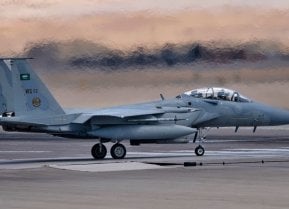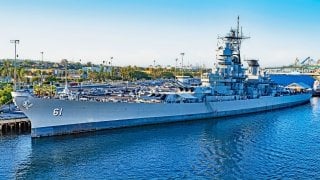The 5 Best Battleships of World War II
The U.S. Navy had some of the best battleships to ever sail, waging war during World War II again Japan and Germany. The Iowa-class was clearly one of them.
More than 60 battleships, including 23 from the United States alone, took part in combat operations during the Second World War. They were among the largest capital ships ever built, yet the conflict saw few battleship-to-battleship engagements. By the time the war ended, the age of the big-gun battle wagon was all but over.
The U.S. Navy was the only power whose battleships ever fired their guns in anger after 1945, but the role those warships played in World War II simply can't be overstated. They provided fire support for naval landings in North Africa, Europe, and most notably the Pacific.
It is hard to narrow down a list of the best of the dozens of battleships that took part in the war, but immediately scratched off are the likes of Yamato, Musashi, Bismarck, Tirpitz, and Prince of Wales. Those ships, despite their powerful armament and advancements, all ended up on the bottom of the ocean. A GOAT list should not include losers in any form – and those ships lost, big time!
The truly best are the warships that we can visit today.
USS Texas (BB-35)
She was among the oldest battleships to see service in the Second World War, and likely was older than some of her crew at the time. Launched in 1912, USS Texas (BB-35) provided escort and blockade duties in the Atlantic Ocean during the First World War, and in April 1917, while protecting the merchant vessel Mongolia, fired on a surfaced German U-Boat – the first American shots of the conflict.
During the Second World War, BB-35 took part in convoy duties that carried Lend-Lease material to the United Kingdom. It was also part of Task Group 34.8 in support of Operation Torch, the Allied invasion of North Africa. It was from the USS Texas that Lt. General Dwight D. Eisenhower transmitted his first "Voice of Freedom" broadcast, which called on the Vichy French forces not to oppose the Allied landings.
The USS Texas later provided supporting fire during the Normandy landings and also took part in the Allied invasion of the South of France during Operation Dragoon before being deployed to the Pacific, where she also supported the landings at Iwo Jima and Okinawa.
The USS Texas has been a museum ship since 1948 – and remains the only battleship still in existence to see service in both World Wars. She was truly one of the best.
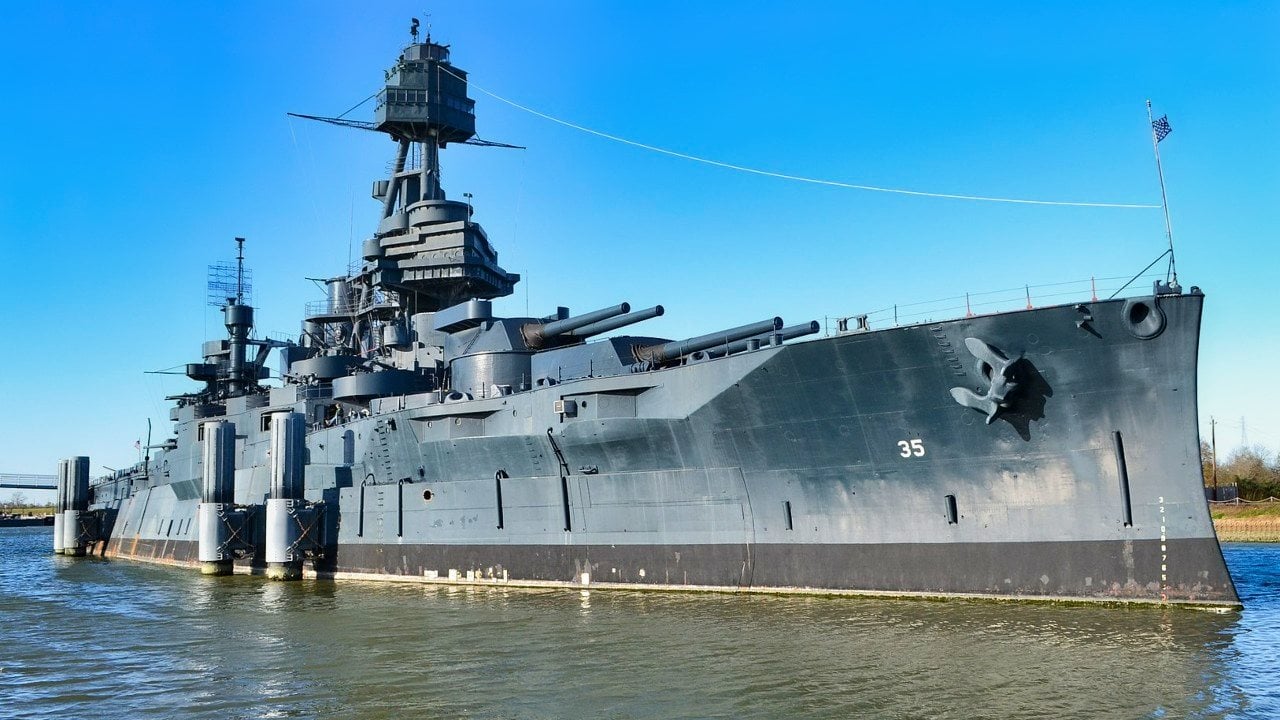
USS Alabama (BB-60)
The fourth and final 35,000-ton South Dakota-class battleship constructed, the USS Alabama (BB-60) operated along the East Coast in late 1942 and early 1943. She later was stationed in the North Atlantic to guard against a threat from German warships. She was transferred to the Pacific in August 1943 and subsequently took part in operations to capture the Gilbert Islands.
BB-60 then provided fire support during the landings in the Marshalls and the Marianas and took part in the Battles of the Philippine Sea and Leyte Gulf. She took part in the final operations of the war, including the attacks on the Japanese home islands. The USS Alabama finally assisted in Operation Magic Carpet after the war, carrying some 700 men home from the former war zone.
While she was originally slated to be broken up, she was instead saved as a museum ship (the USS Alabama Battleship Memorial Park) in Mobile Bay. Interestingly, when the U.S. Navy reactivated its four Iowa-class battleships, some parts were cannibalized from BB-60 (and other preserved WWII battleships) to restore those fast battleships to service. In addition, the USS Alabama has been used as the set for several movies, notably 1992's Under Siege, standing in for USS Missouri (BB-64).
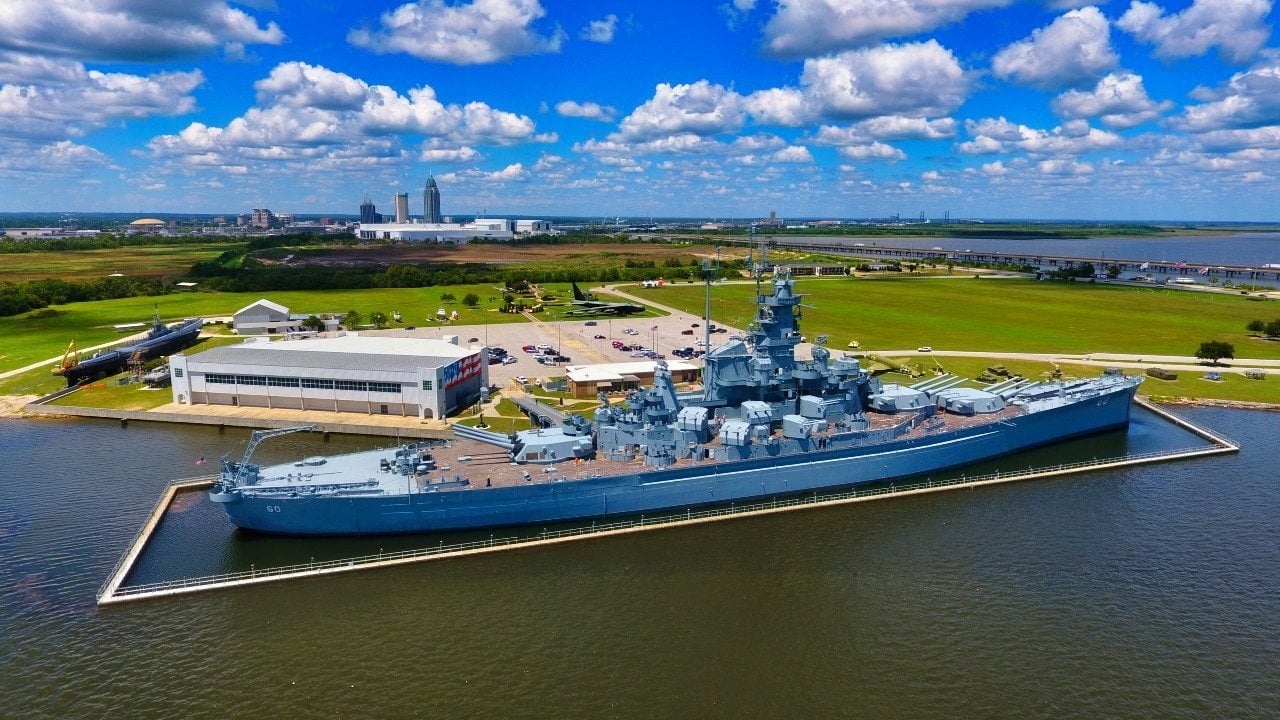
USS Iowa (BB-61)
The lead vessel of the final class of U.S. Navy battleships to be constructed, the USS Iowa (BB-61) was commissioned in 1943. As a "fast battleship," she played a crucial role in the war, escorting aircraft carrier task forces, bombing shore positions, and even providing artillery support during invasions of enemy-held islands. The battleship also directed her guns at industrial targets on the Japanese homeland islands, and was later present at the Japanese surrender in Tokyo Bay.
After the war, she returned to service during the Korean War, and again in the 1980s. She earned a total of 11 battle stars, but also hosted three U.S. presidents, ultimately earning the nicknames "Battleship of Presidents" and "Big Stick."
President Franklin D. Roosevelt, who used the warship to transport him partway to the Tehran Conference with Winston Churchill and Joseph Stalin, said of the ship, "From all I have seen and all I have heard, the Iowa is a 'happy ship,' and having served with the Navy for many years, I know, and you know, what that means."
The state of Iowa is 1,200 miles away from the ocean, but the battle wagon named in the state's honor is now happily preserved at the Port of Los Angeles in San Pedro as the Battleship USS Iowa Museum.
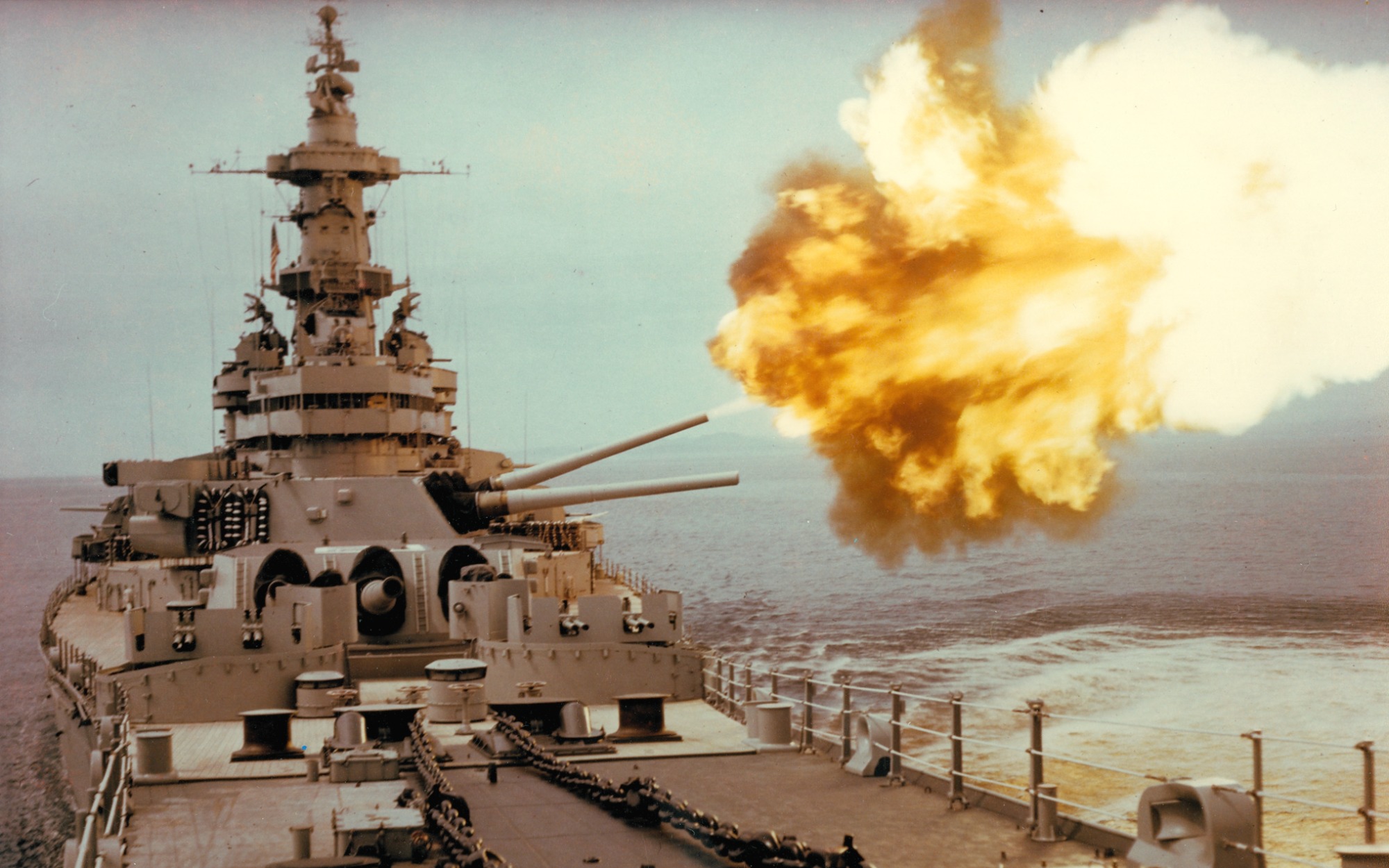
USS New Jersey (BB-62)
Known as the "Big J" or "Black Dragon," the USS New Jersey (BB-62) – the second Iowa-class battleship – has the notable distinction of being one of the most decorated warships to have ever served in the U.S. Navy. She was also among the largest warships ever built.
Designed to be a flagship, her first combat action came when she served in the Fifth Fleet under Adm. Raymond A. Spruance. BB-62 provided fire support during the landings on the Marshal Islands in January 1944, while her 16-inch guns were next employed on Saipan and Tinian. She later screened the American aircraft carriers during the Battle of the Philippine Sea, where the anti-aircraft fire from the USS New Jersey and other screening ships proved virtually impenetrable.
The USS New Jersey was also the only U.S. battleship to provide gunfire support during the Vietnam War. In total, BB-62 earned nine battle stars for service in the Second World War and went on to win four more for Korea, three for the Vietnam War, and three for actions in Lebanon and the Persian Gulf Region.
The mighty warship is currently preserved as the Battleship New Jersey Memorial and Museum in Camden, N.J. across from the Philadelphia waterfront.
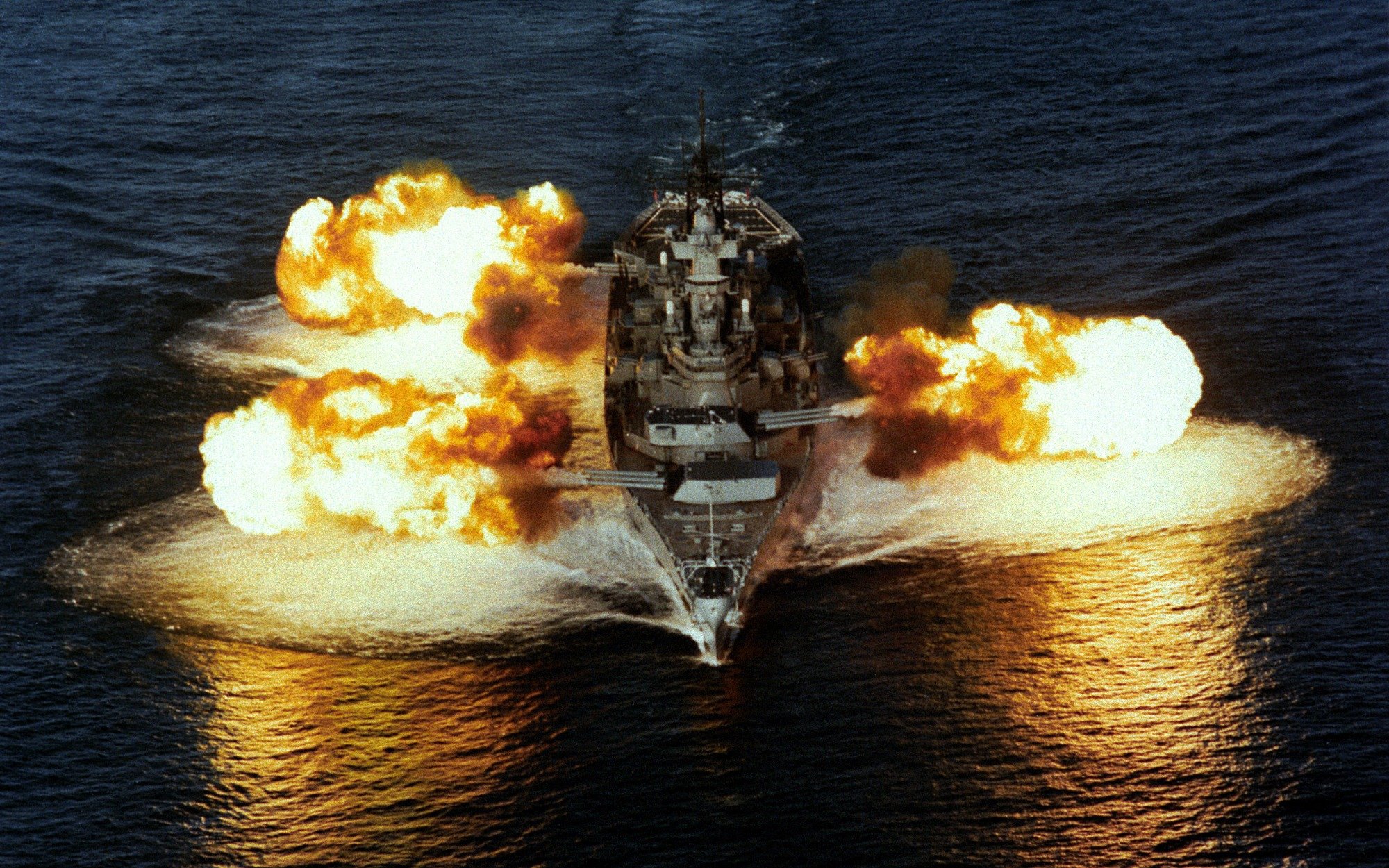
USS Missouri (BB-63)
Had the USS Missouri (BB-63), the fourth and final Iowa-class battleship, never fired her guns in anger, she would still top this list, because it was on her deck on Sept. 2, 1945, that the Empire of Japan officially surrendered and ended the Second World War. That 23-minute surrender ceremony was broadcast around the world.
Yet, for her service in the conflict, the USS Missouri earned three battle stars – and would go on to receive five more battle stars for the Korean War, as well as two Combat Action Ribbons and many other commendations and medals for service in the Gulf War. She supported the invasion of Iwo Jima and participated in the bombardment of Okinawa. "Mighty Mo," as she was also known, was later the first battleship to fire Tomahawk cruise missiles, launching them at Iraqi targets at the start of Operation Desert Storm.
On Dec. 7, 1991, the USS Missouri also took part in a "voyage to remembrance," which marked the 50th anniversary of the Pearl Harbor attacks. During that ceremony, BB-63 hosted then-President George H.W. Bush, the first such presidential visit for the battleship since Harry Truman boarded her in September 1947.
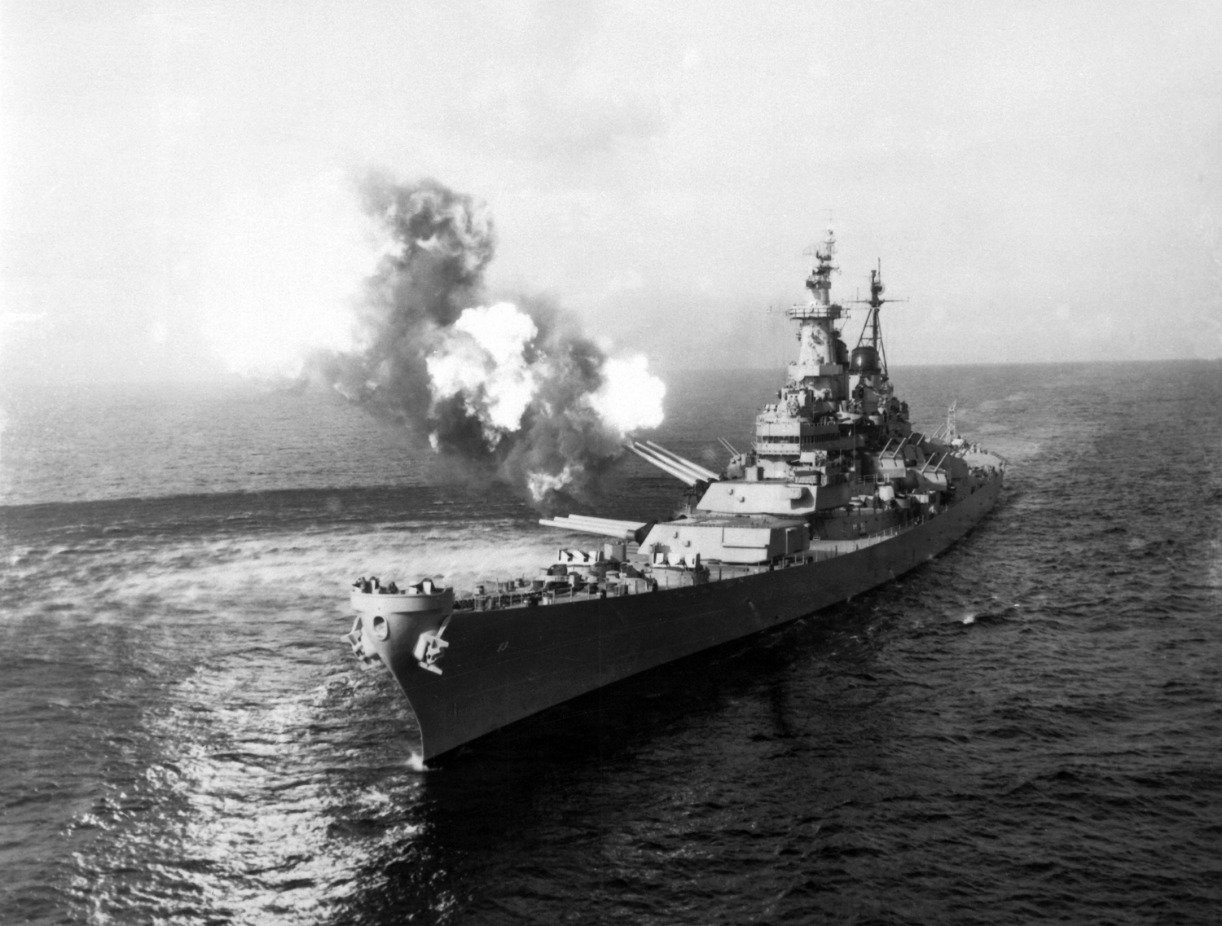
The same year, the age of the battleship came to a final end, as all four of the Iowa-class battleships – the largest ever built for the U.S. Navy – were converted to museum ships. In the case of the USS Missouri, it was almost a dream retirement at Pearl Harbor, Hawaii – which is fitting. She was located where America's entry into World War II began, while she is the vessel on which it ended.
About the Author
Peter Suciu is a Michigan-based writer who has contributed to more than four dozen magazines, newspapers and websites. He regularly writes about military hardware, firearms history, cybersecurity and international affairs. Peter is also a Contributing Writer for Forbes. You can follow him on Twitter: @PeterSuciu.
Main image is from Shutterstock. All others are Creative Commons accept for USS Alabama which is also from Shutterstock.
